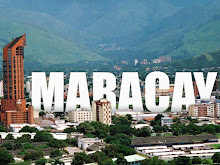Process
control is an engineering discipline that deals with architectures, mechanisms
and algorithms for maintaining the output of a specific process within a
desired range. For instance, the temperature of a chemical reactor may be
controlled to maintain a consistent product output.
Process
control is extensively used in industry and enables mass production of
consistent products from continuously operated processes such as oil refining,
paper manufacturing, chemicals, power plants and many others. Process control
enables automation, by which a small staff of operating personnel can operate a
complex process from a central control room.
Background
 Process
control may either use feedback or it may be open loop. Control may also be
continuous (automobile cruise control) or cause a sequence of discrete events,
such as a timer on a lawn sprinkler (on/off) or controls on an elevator
(logical sequence).
Process
control may either use feedback or it may be open loop. Control may also be
continuous (automobile cruise control) or cause a sequence of discrete events,
such as a timer on a lawn sprinkler (on/off) or controls on an elevator
(logical sequence).
A
thermostat on a heater is an example of control that is on or off. A
temperature sensor turns the heat source on if the temperature falls below the
set point and turns the heat source off when the set point is reached. There is
no measurement of the difference between the set point and the measured
temperature (e.g. no error measurement) and no adjustment to the rate at which
heat is added other than all or none.
A
familiar example of feedback control is cruise control on an automobile. Here
speed is the measured variable. The operator (driver) adjusts the desired speed
set point (e.g. 100 km/hr) and the controller monitors the speed sensor and
compares the measured speed to the set point. Any deviations, such as changes
in grade, drag, wind speed or even using a different grade of fuel (for example
an ethanol blend) are corrected by the controller making a compensating
adjustment to the fuel valve open position, which is the manipulated variable.
The controller makes adjustments having information only about the error
(magnitude, rate of change or cumulative error) although settings known as
tuning are used to achieve stable control. The operation of such controllers is
the subject of control theory.
A
commonly used control device called a programmable logic controller, or a PLC,
is used to read a set of digital and analog inputs, apply a set of logic
statements, and generate a set of analog and digital outputs.
 For
example, if an adjustable valve were used to hold level in a tank the logical
statements would compare the equivalent pressure at depth setpoint to the
pressure reading of a sensor below the normal low liquid level and determine
whether more or less valve opening was necessary to keep the level constant. A
PLC output would then calculate an incremental amount of change in the valve
position. Larger more complex systems can be controlled by a Distributed
Control System (DCS) or SCADA system.
For
example, if an adjustable valve were used to hold level in a tank the logical
statements would compare the equivalent pressure at depth setpoint to the
pressure reading of a sensor below the normal low liquid level and determine
whether more or less valve opening was necessary to keep the level constant. A
PLC output would then calculate an incremental amount of change in the valve
position. Larger more complex systems can be controlled by a Distributed
Control System (DCS) or SCADA system.
Types
of processes using process control
Processes
can be characterized as one or more of the following forms:
- Discrete – Found in many manufacturing, motion and packaging applications. Robotic assembly, such as that found in automotive production, can be characterized as discrete process control. Most discrete manufacturing involves the production of discrete pieces of product, such as metal stamping.
- Batch – Some applications require that specific quantities of raw materials be combined in specific ways for particular durations to produce an intermediate or end result. One example is the production of adhesives and glues, which normally require the mixing of raw materials in a heated vessel for a period of time to form a quantity of end product. Other important examples are the production of food, beverages and medicine. Batch processes are generally used to produce a relatively low to intermediate quantity of product per year (a few pounds to millions of pounds).
- Continuous – Often, a physical system is represented through variables that are smooth and uninterrupted in time. The control of the water temperature in a heating jacket, for example, is an example of continuous process control. Some important continuous processes are the production of fuels, chemicals and plastics. Continuous processes in manufacturing are used to produce very large quantities of product per year (millions to billions of pounds).
Applications
having elements of discrete, batch and continuous process control are often
called hybrid applications.


















0 comentarios:
Publicar un comentario